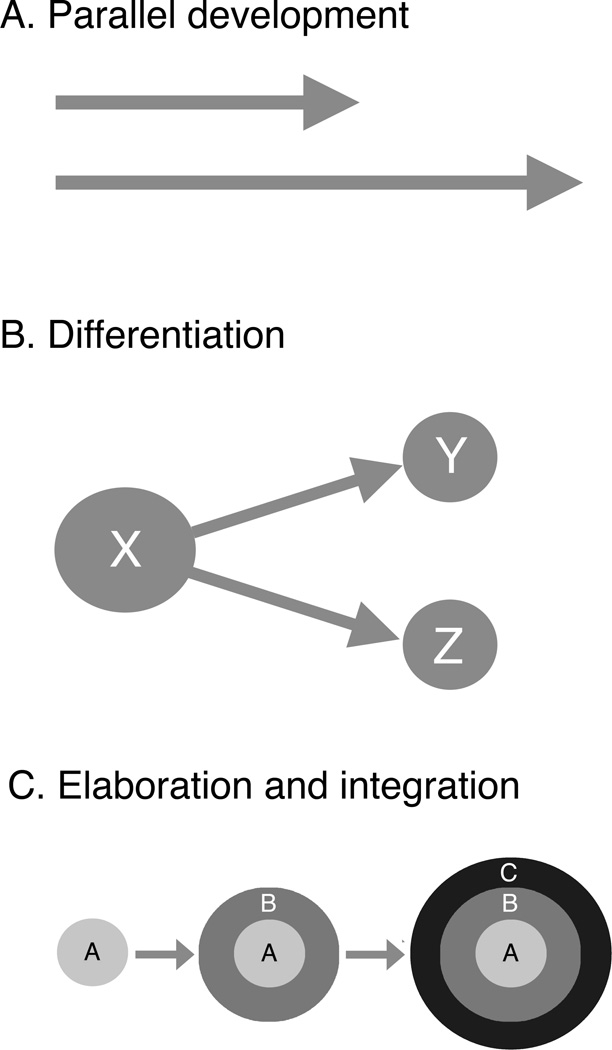Figure 1.
Three patterns of development discussed in this paper. (A) Parallel development, as conceptualized by Hall and Williams (1983) for the developmental relations between suckling (short arrow) and feeding (long arrow). Both suckling and feeding are expressed early in development in rats, but suckling disappears at weaning as feeding continues. This is an idealization of the relationship of Hall and Williams who acknowledged the likelihood that some control mechanisms would be shared between the two behavioral systems. (B) Differentiation, as conceptualized by Frank and Heller (2003) for the developmental relations among presleep (X) and adult forms of active (Y) and quiet sleep (Z). According to this view, presleep is a "common precursor" to active and quiet sleep. (C) Elaboration and integration, based on Blumberg and Seelke’s (2010) conceptualization of the development and emergence of sleep-wake components. According to this view, some foundational components and their neural mechanisms are expressed early in development and are retained throughout infancy into adulthood. In this figure, component A is a foundational component and could represent the behavioral manifestations of sleep and wake (e.g., high-amplitude movements indicative of wake and myoclonic twitches indicative of active sleep). Component B could represent fluctuations between high muscle tone (indicative of wake) and low muscle tone or atonia (indicative of sleep). Finally, component C could represent the emergence at P11 of differentiated cortical activity, especially delta activity.

